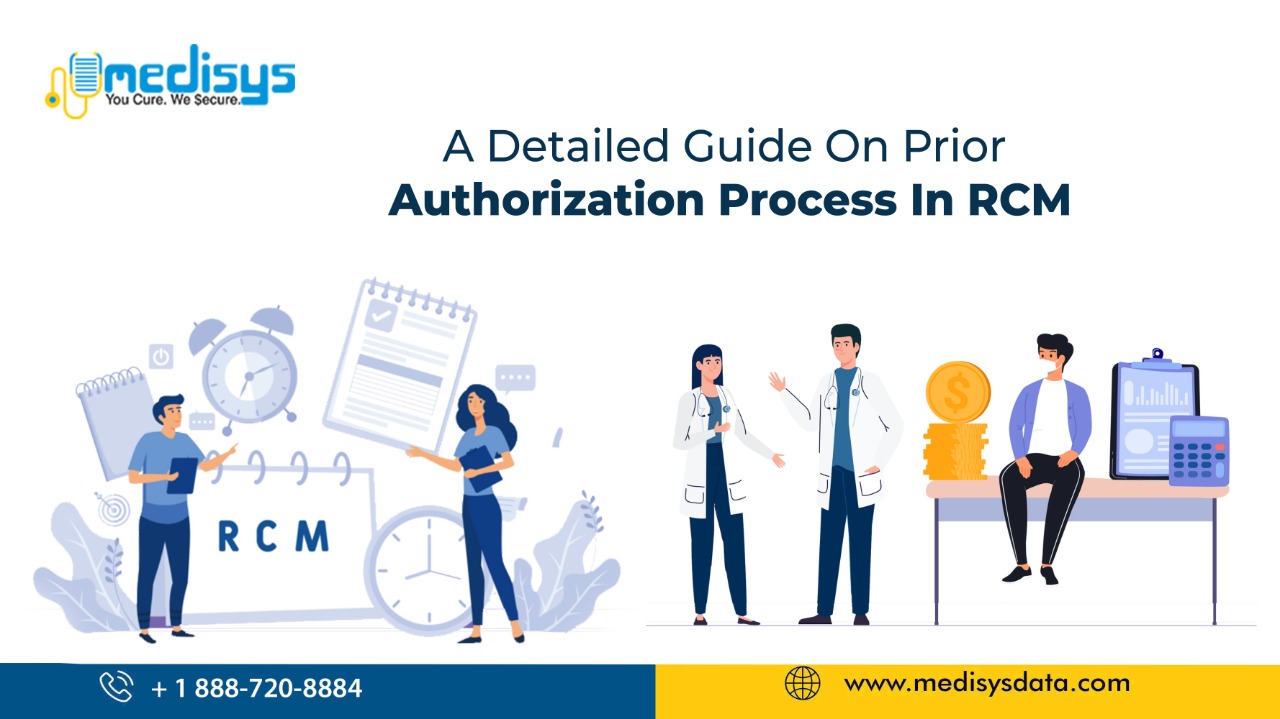In no small measure, the difficulty of providing patients with the proper care at the appropriate time has skyrocketed up the graph, and the conflict between cost-conscious insurance companies, patients, and their doctors won’t go away any time soon. Sounds like a dilemma? We all can agree to the stemmed fact that finding innovative ways to improve care delivery has been a goal for many healthcare executives as the healthcare landscape continues to get more complex.
Here’s food for thought! Even though you’ve reviewed your processes, improved the workflow, and trained your team, your revenue still doesn’t correspond to the number of doctors or the amount of hours they devote to patient care. What is happening? Where are the losses and income leakage that you can’t identify?
Let’s talk facts shall we? Prior authorization requires a lot of expertise and guidance to get it right. Thus, resorting to an in-house team is not a fine option. Prior authorization management is a crucial component of revenue cycle management and thus needs to be handled by the experts of the healthcare industry. To demonstrate to the insurance company why a particular medical treatment, equipment, or medicine that has been prescribed is required, a healthcare professional must complete a PA form as part of the PA process. The necessity and significance of the Prior Authorization Process are discussed in this article.
What Exactly Is Prior Authorization?
Before a certain treatment, service, gadget, or drug is given to the patient in order to qualify for coverage, doctors and other healthcare professionals must acquire in advance approval from a health insurance plan (known as a “prior authorization” or “PA”) process.
How Does the Need for Medical Care Affect Pre-Authorization?
The hospital must decide whether to absorb the expense or charge the patients when health care providers are unable to obtain the required clearances and the payer (insurance company) denies the concerned payment. Procedures not covered by the patient’s health plan are explicitly defined and noted during the verification process. The patient is liable for paying for any services rendered when they obtain benefits or treatments that are not covered by their insurance plan. However, when claims are rejected owing to the provider’s failure to obtain authorization, they must bear the expense themselves, which results in a financial loss that affects the entire revenue cycle.
In some circumstances, the patient receives a bill for the unpaid amount, and they are then responsible for paying it. However, doing so would be wrong and would harm the hospital’s standing. Therefore, getting pre-authorization at the appropriate time is crucial to getting paid for the treatments provided.
Healthcare organizations can streamline the prior authorization process and lighten the load on staff and clinicians by following these best practices. These actions also lessen the risk of denials, operational stumbling blocks, and patient care delays. Let’s take a look at significant pointers that streamline the prior authorization process, shall we?
1. Accurate Records to Prevent Rejections:
The lengthy prior authorization process won’t be preferred by the majority of healthcare practitioners because it takes up so much of their valuable time. However, cutting corners with PA processes will only result in rejections. Things are preferable to get it correctly the first time in order to avoid problems of this nature.
Even if there are a lot of new insurance plans available today and more pharmaceuticals are falling under the PA umbrella, healthcare providers may still find it difficult to go forward. Therefore, prior authorization is now a cost-effective strategy. To better handle documentation and save time, many providers have started switching to electronic PA.
2. Pre-authorization that has been approved makes the documentation process simple:
Some insurance providers do pre-approved particular medications and treatments. In such circumstances, the documentation process becomes simpler to initiate, leading to effective RCM. Pre-authorization that has been issued has occasionally been the subject of complaints from both the patient and the insurance provider regarding unnecessary billing costs.
It is advised to give the right information regarding the set amount payable during the medical visit, the initial amount payable before the insurance plan kicks in, and a percentage of the patient’s share of the costs associated with the appointment.
3. The Part Played By Patients In The Prior Authorization Process:
The PA procedure is not for payers and healthcare providers. In the pre-authorization procedure, the patient is also crucial. Why? Because they must exchange information and comprehend the payer’s inclusion and exclusion requirements.
Healthcare professionals should make sure that the following patient data is appropriately obtained before starting the PA process. This information covers the patient’s whole medical history, past treatments, ailments, symptoms, and diagnoses, as well as in-depth physician notes.
4. Improve PA With Emerging Technology:
Prior Authorization is being translated into technical breakthroughs as the healthcare business began to experience a significant technological revolution. Numerous software programs are being created today that allow access to electronic health records and perform PA (EHR). This type of healthcare software has the sophisticated capabilities to access and synchronize patient medical records, reducing PA errors, the time and financial expenses associated with the permission procedure.
5. Protect patient health information and PA:
When handling patient health records and prior authorization on an electronic health record (EHR) platform, privacy and information security should be your top priorities. Everything should be kept safe, including wireless and physical restrictions, access authorization to the system, password controls, and access controls.
Preauthorization is a complicated process for a number of reasons. These consist of:
- Each payer has different and numerous requirements, which causes mistakes and delays.
- Workflows between payers and providers are inconsistent.
- Rules for payers are not uniform and it is continually evolving.
- Providers cannot constantly review and update payer rules.
- Payers continue to add to current health plans to grow their company.
- Errors occur when previous auth requests are manually entered.
- Lack of skilled personnel results in mistakes that cause delays.
- Stress at work causes medical mistakes.
Preauthorization Benefits of Automation
- Speed up the process for obtaining prior authorizations.
- Less administrative and medical work is required
- Insights into the permission status of real-time data
- Accelerate the delivery of patient treatment
- Reduce denials and monitor the frequency of non-payment
- Improve first submission success to decrease AR backlog and increase cash inflow
- Increasing income by being fully reimbursed for all services rendered
- Boost general practice output.
Wrapping Up
Prior permission work is less of a strain on staff, and it takes up less of their time. Strong patient satisfaction, simplified prior authorizations, and quicker scheduling have helped scores of medical settings make up lost revenue and boost their bottom line financially. If you’re looking for the perfect partner to take over the complexities of the process, Medisys Data Solutions is merely one tap away!












